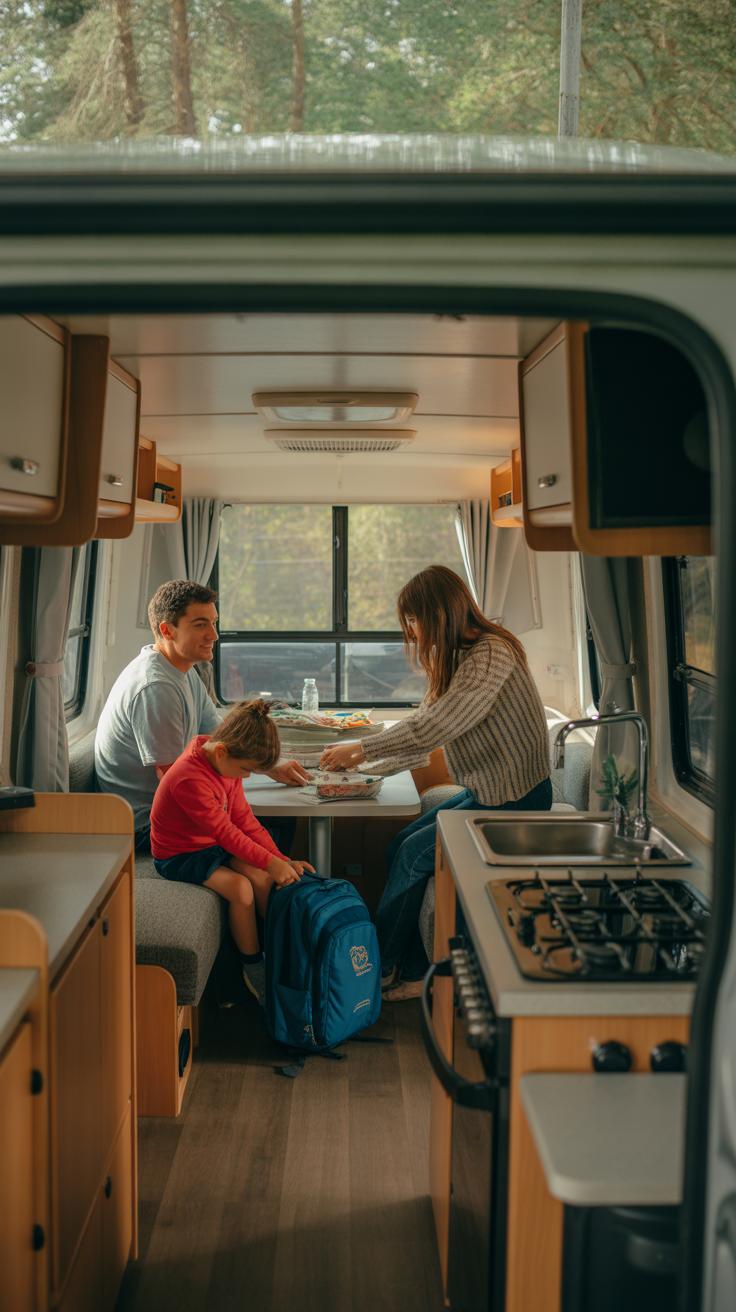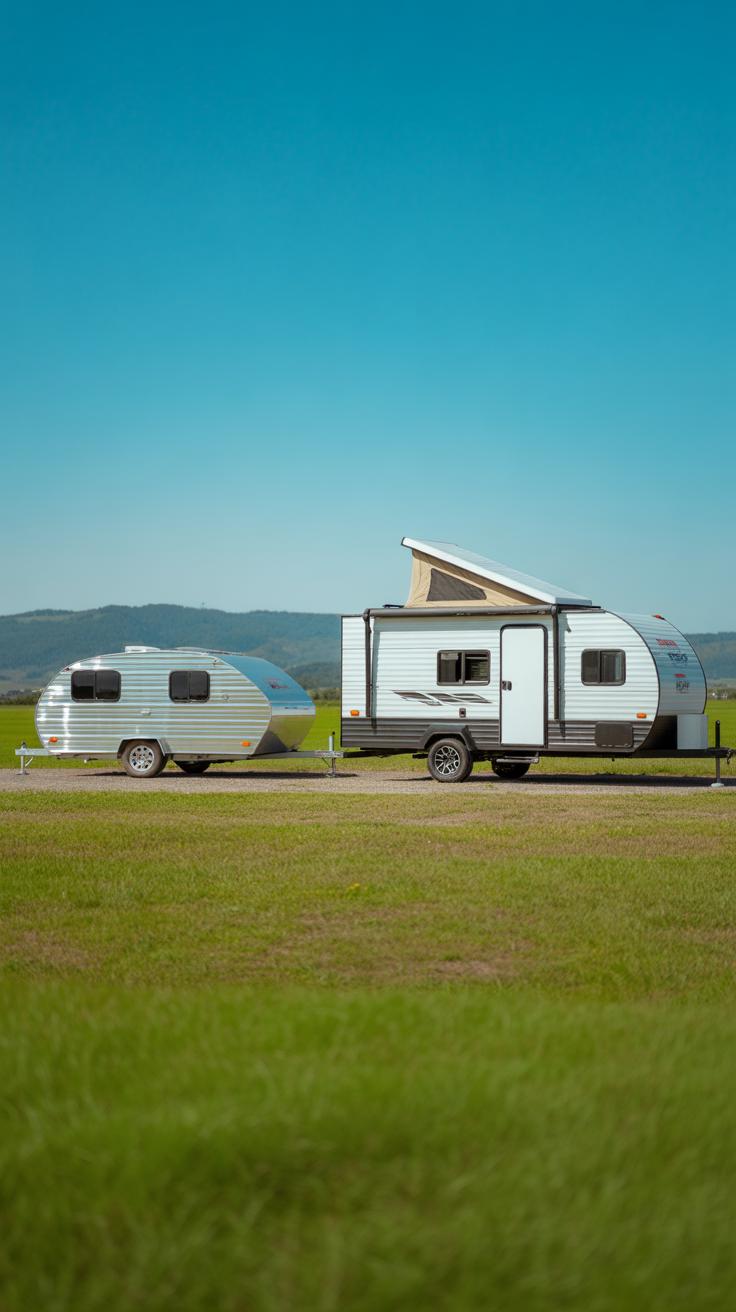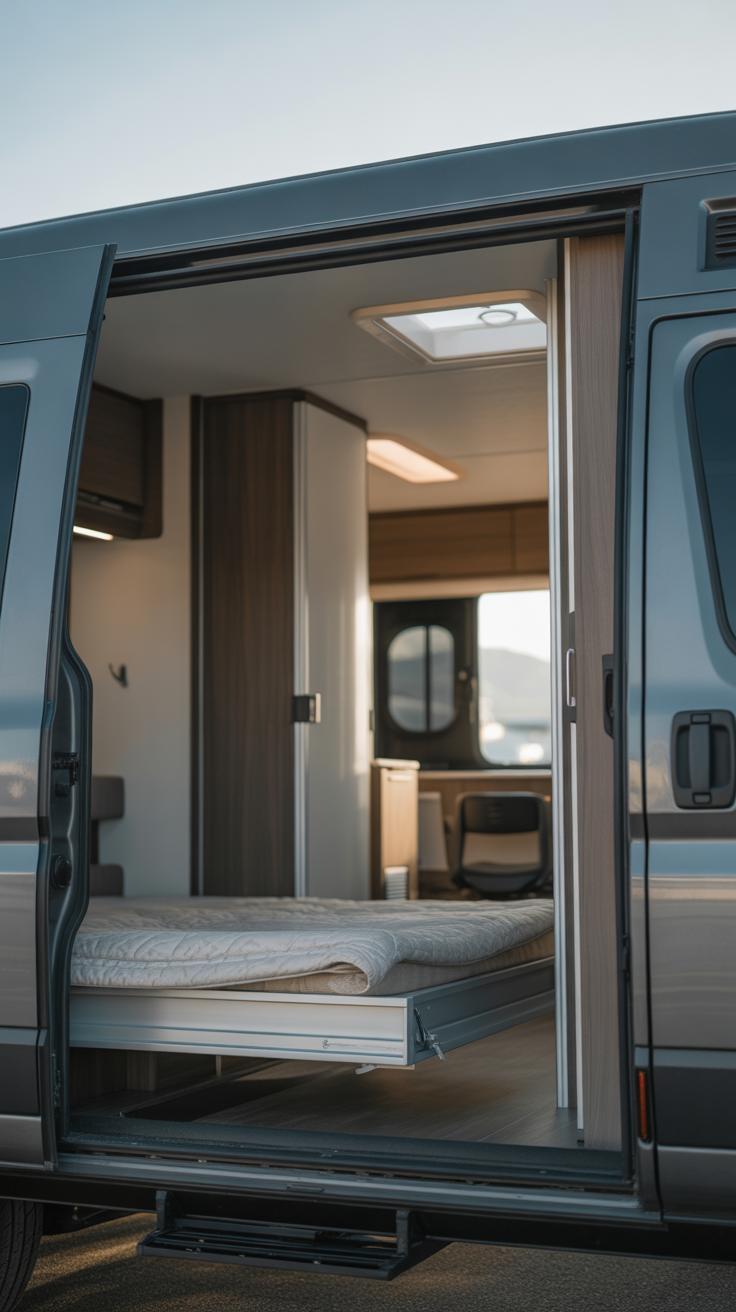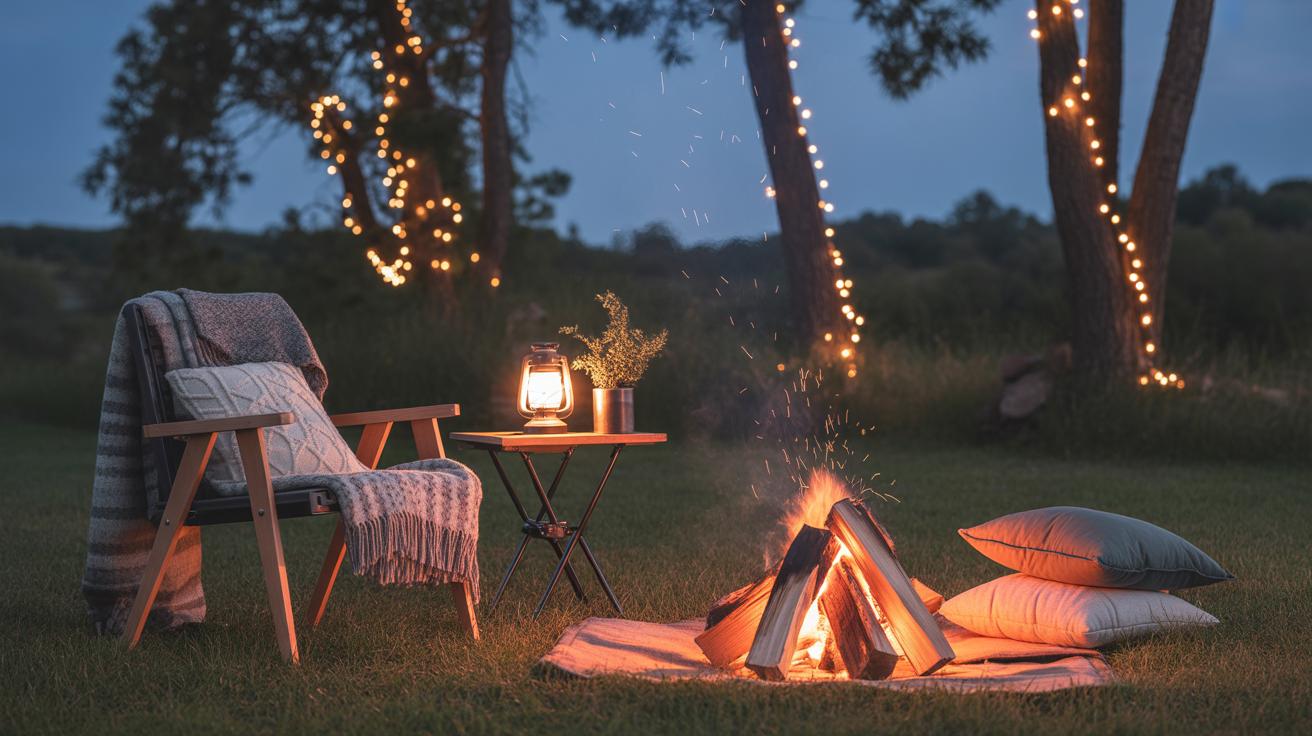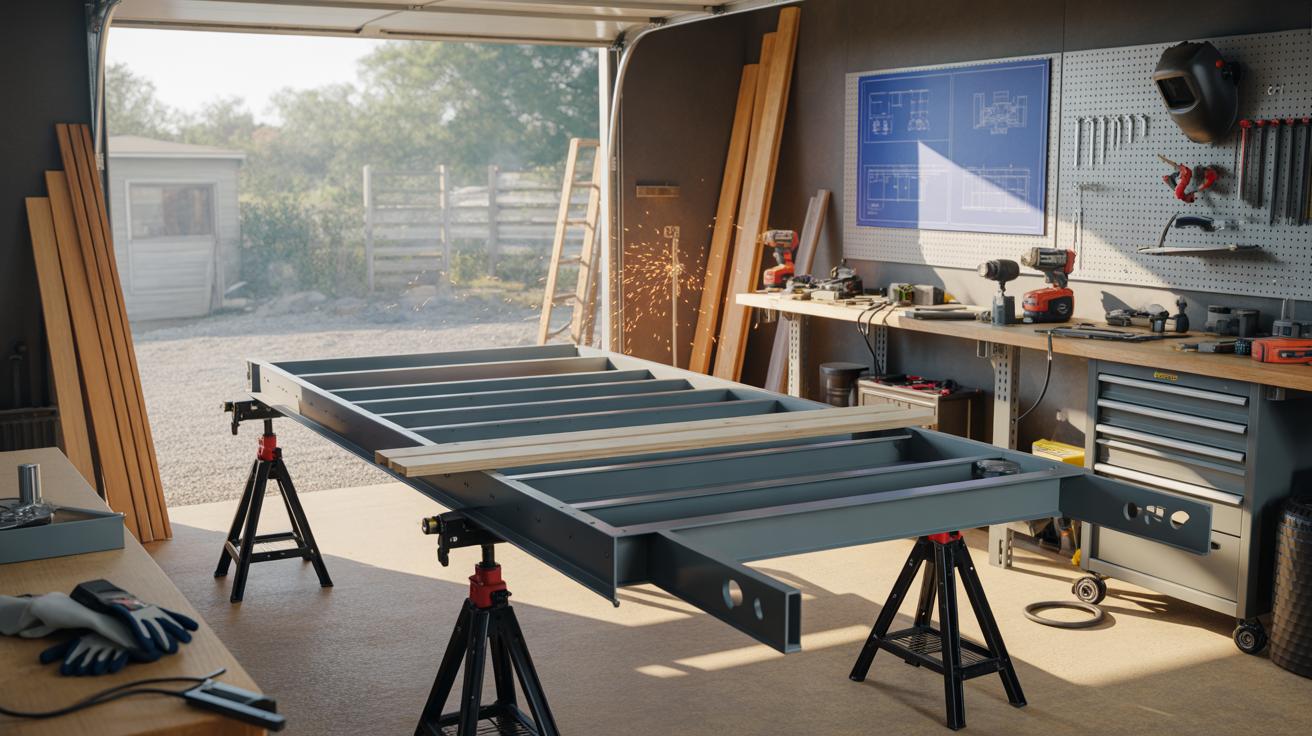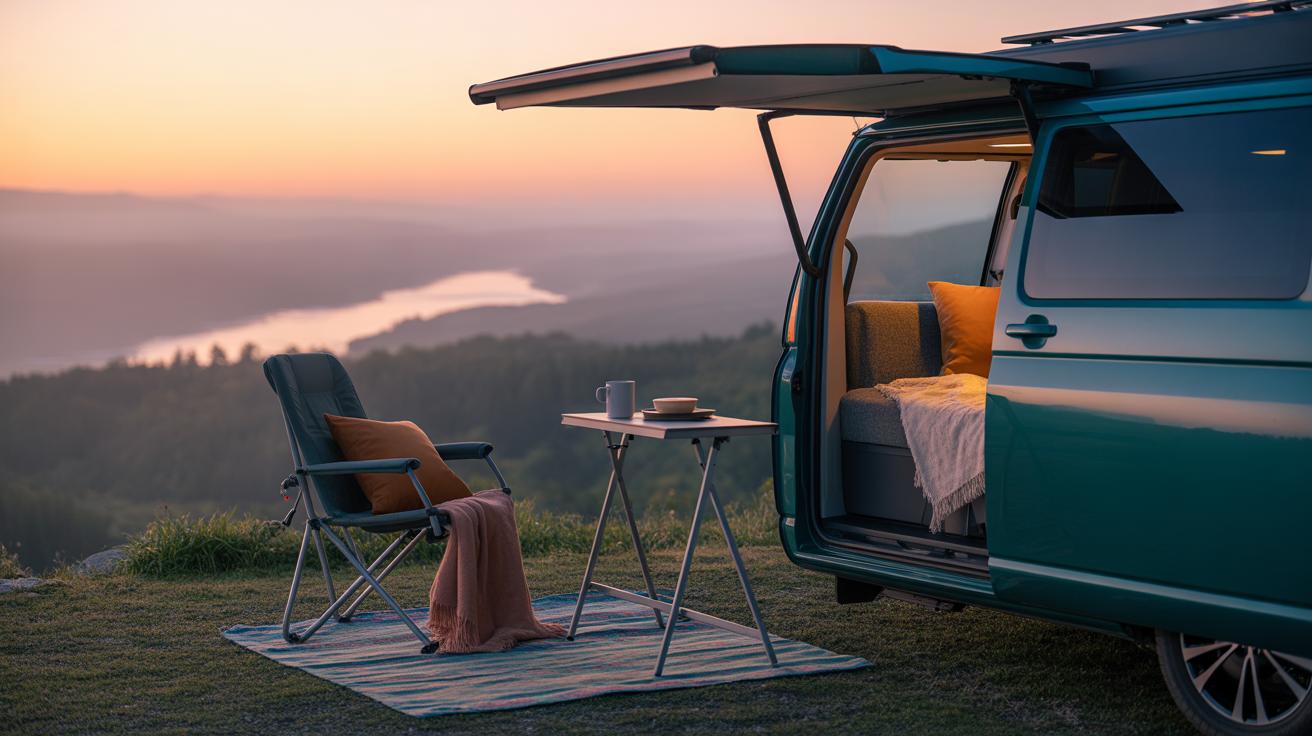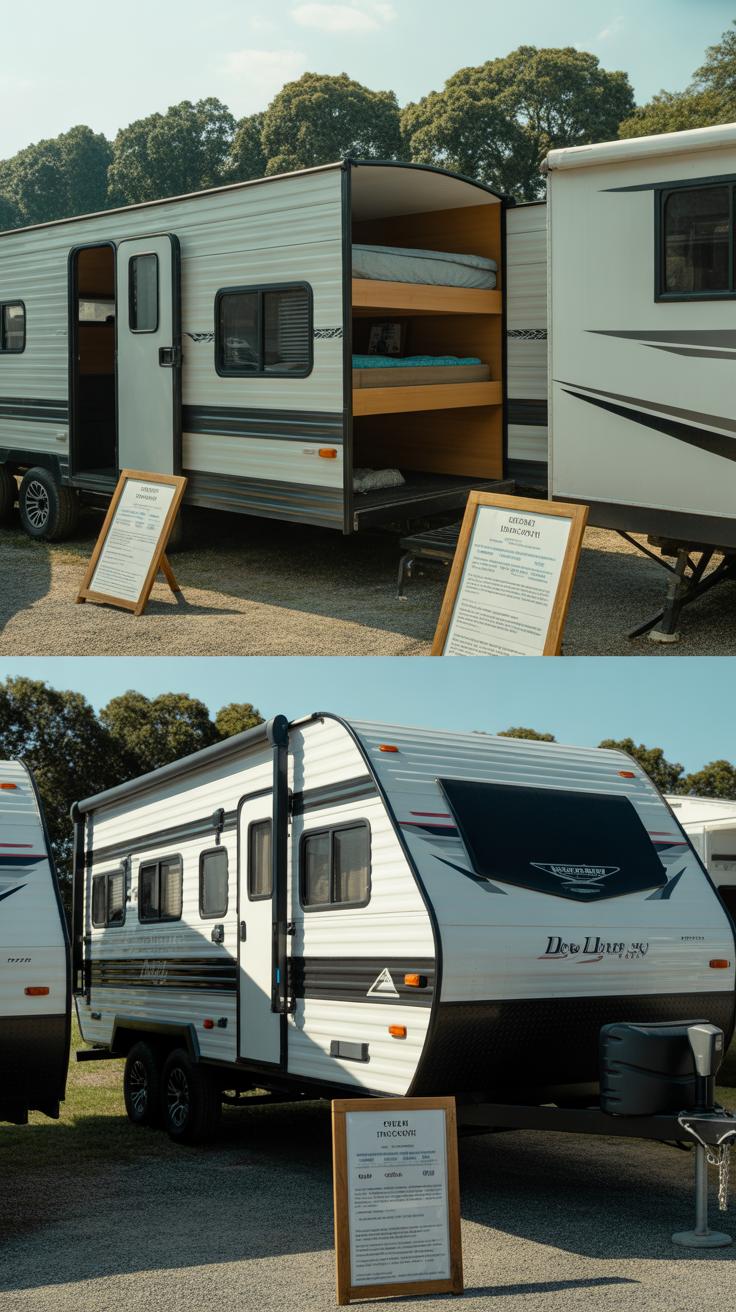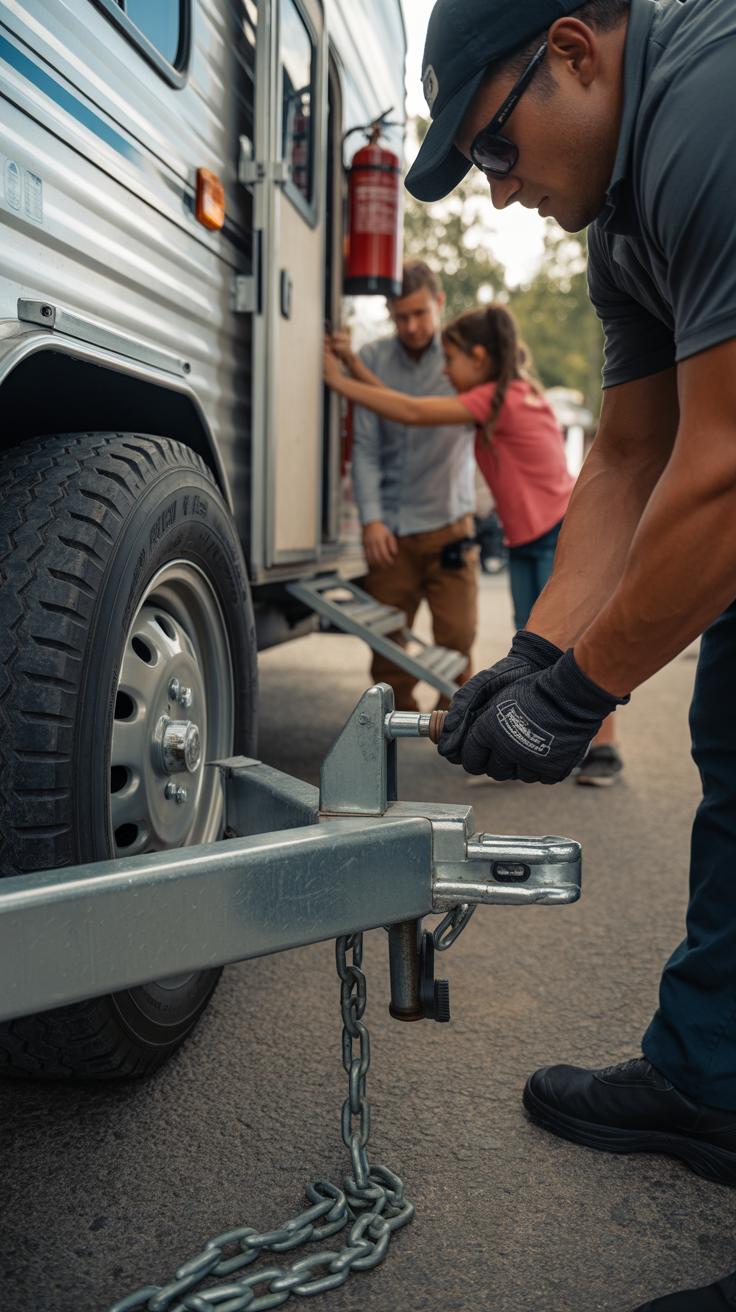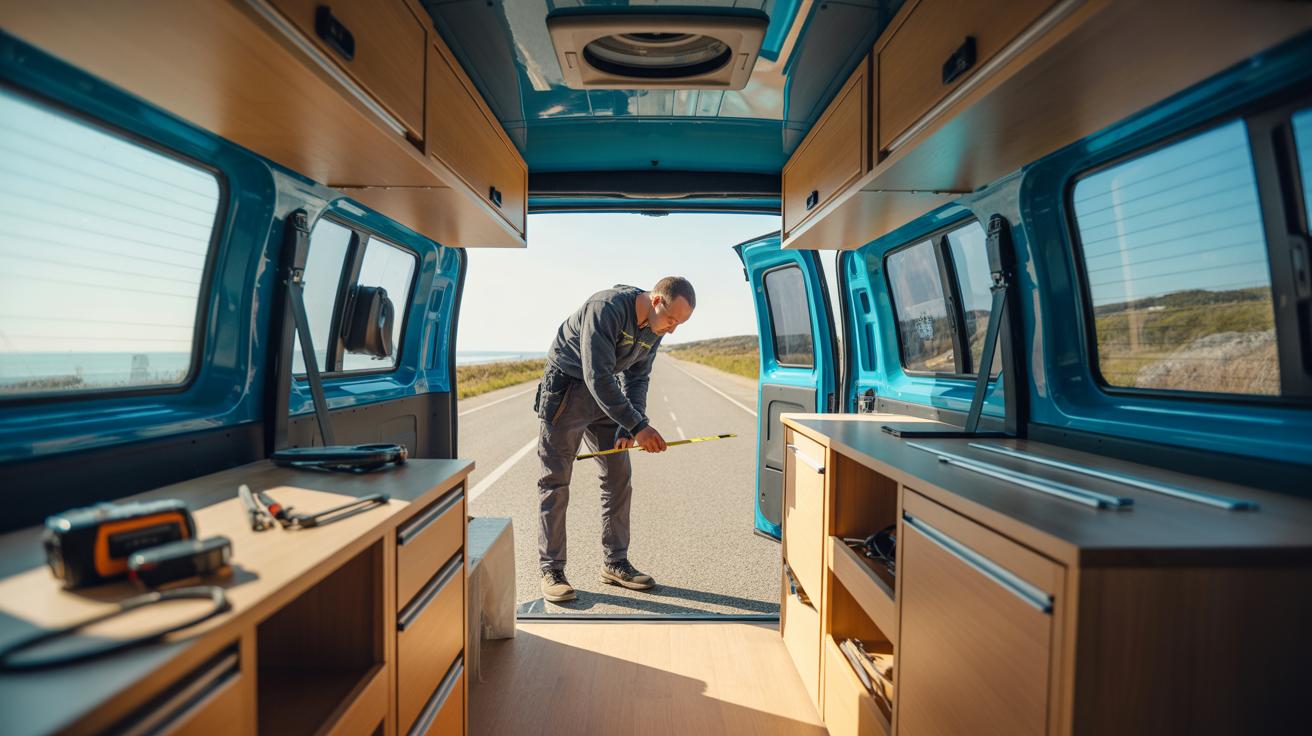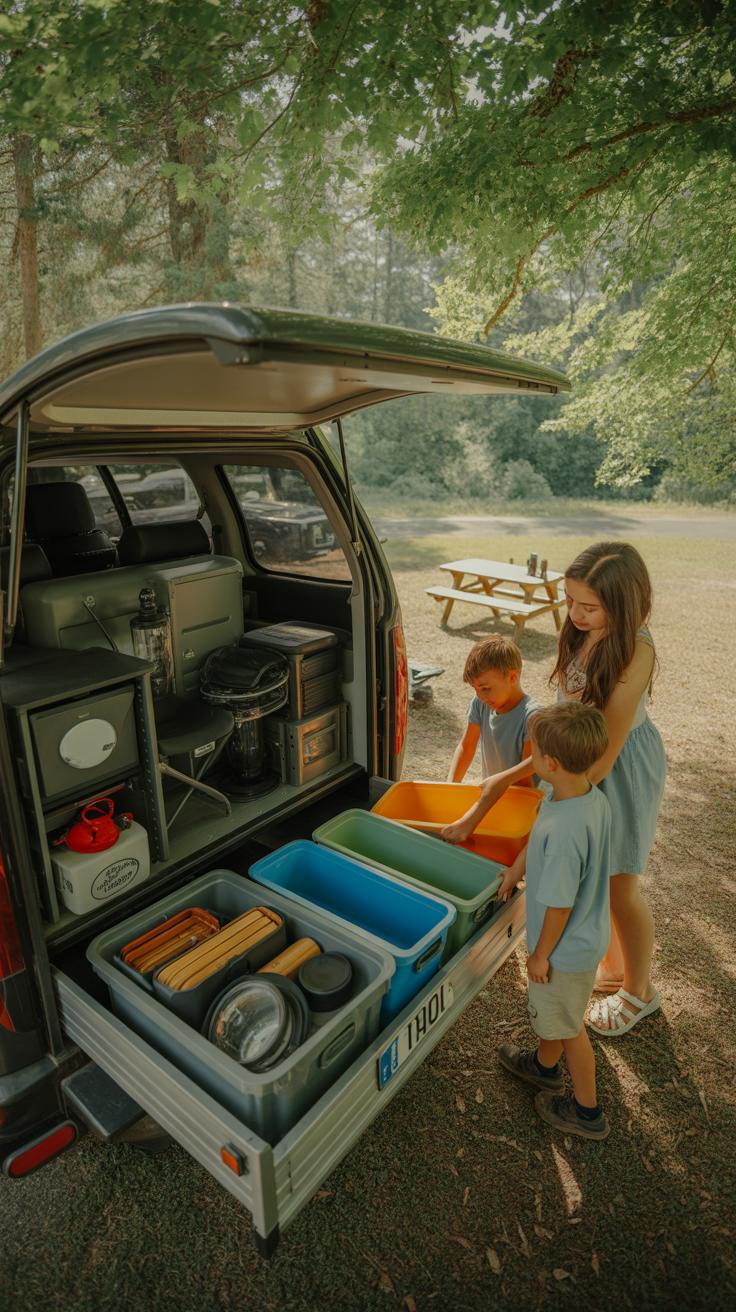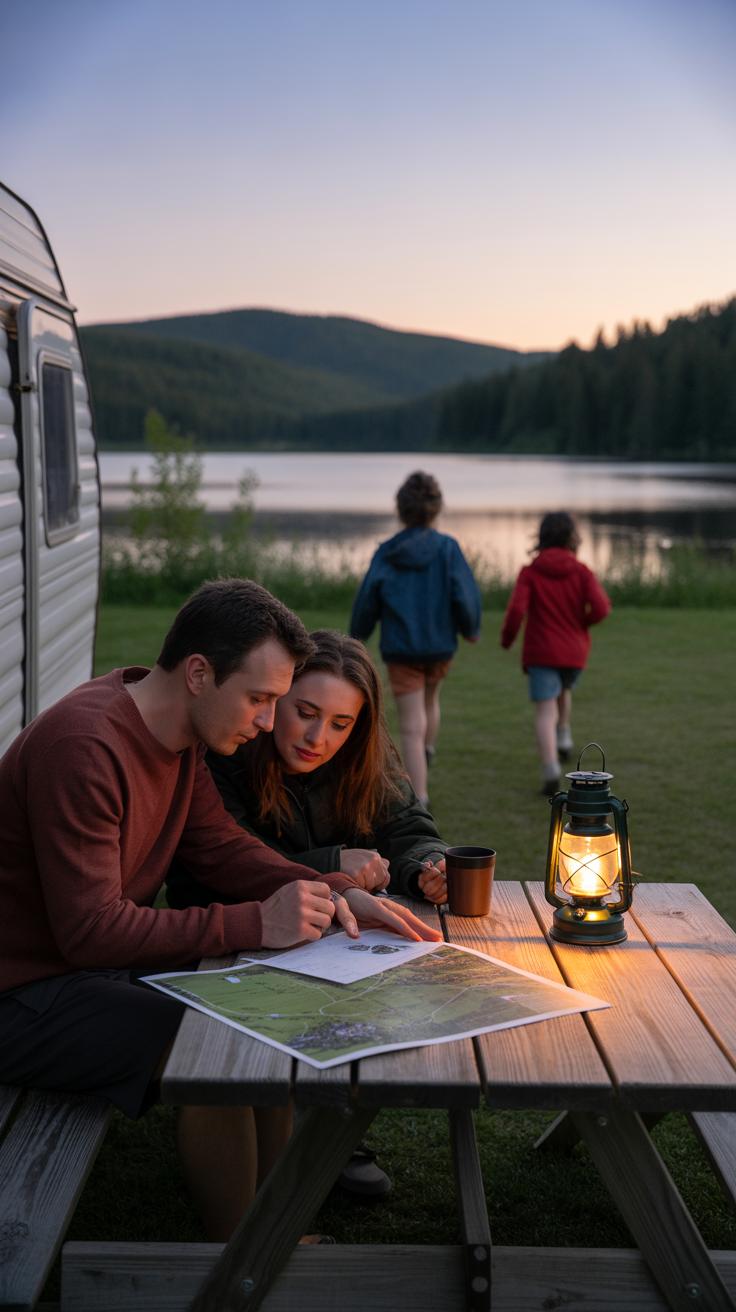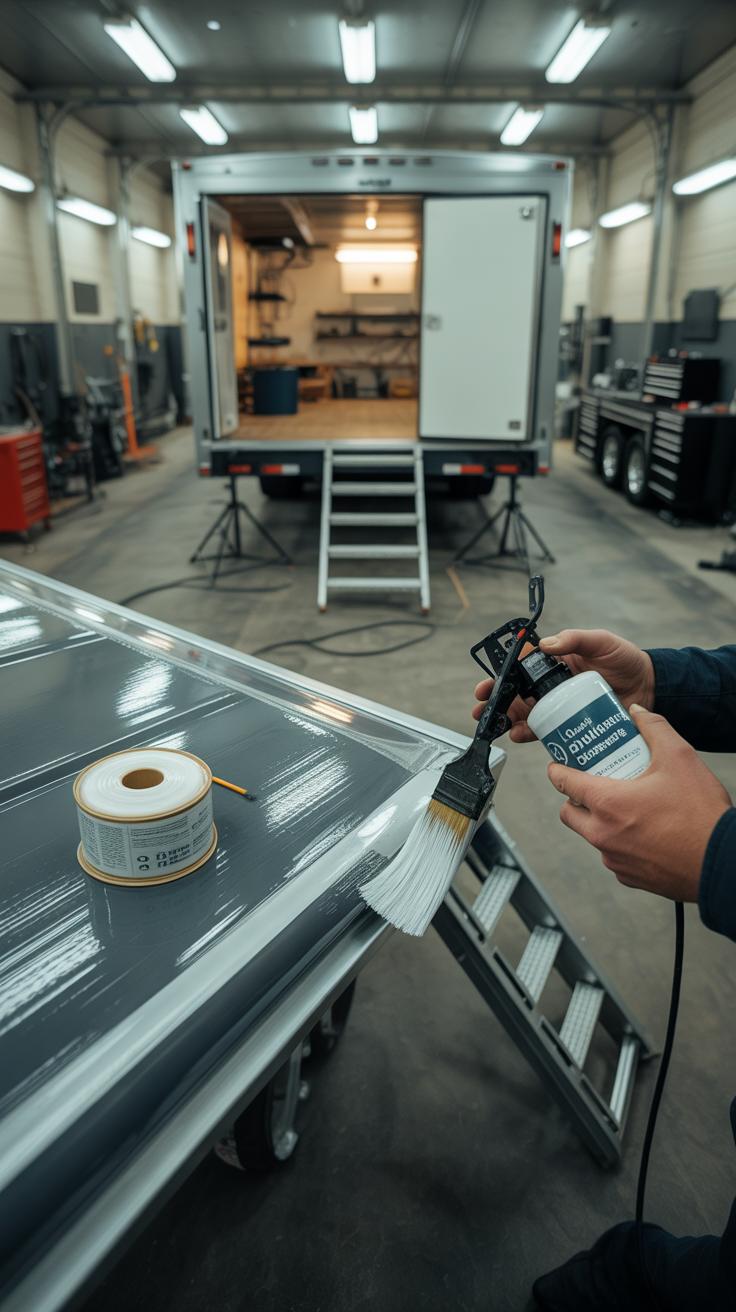
Top Rated Camping Trailer Models For Family Getaways
Introduction
Camping trailers offer families a comfortable and convenient way to enjoy the outdoors. These trailers provide a safe and cozy place to sleep, cook, and relax during your trips. Unlike tents, camping trailers protect you from weather and bugs, making your getaways more enjoyable. Understanding the different types of camping trailers and their features helps you find the right one for your family’s needs.
This article covers the top rated camping trailer models designed for family use. We will explore various types of trailers, important features, how to choose the best trailer for your family, and tips for safe and fun camping trips. Whether you are new to camping or an experienced adventurer, this guide will help you make smart choices for your next family vacation.
Understanding Camping Trailers for Family Use
What is a Camping Trailer
A camping trailer is essentially a towable vehicle designed to provide shelter and basic living amenities while you’re outdoors. Unlike tents, which offer minimal protection and require setup every time, camping trailers come pre-built with walls, a roof, and often include sleeping spaces, kitchens, and even bathrooms. Think of them as portable mini-homes that you can hitch to your car or truck and take along.
They vary in size and complexity—from simple models with just a bed and a small kitchenette, to more elaborate versions with slide-outs and full plumbing systems. The main idea is comfort and shelter combined into one mobile package. It’s quite different from camping in a tent, where weather and insects can be real concerns.
Benefits for Families
For families, trailers provide a level of safety and convenience that tents usually don’t. Kids often need a consistent, comfortable sleeping space, especially after long days of outdoor activities, and a trailer delivers that. It keeps everyone dry during sudden rain, shielded from wind, and protected against critters. I remember the one time when a sudden storm hit our campsite; the trailer felt like a small refuge compared to the usual scramble with tents.
Convenience also plays a big role. Having a dedicated kitchen space means you don’t have to rely on campfires or portable stoves constantly. It also helps keep food and supplies organized, making meal times less stressful. And when you’re traveling with little ones, setting up and breaking down camp quickly is a huge relief. Towing your living quarters means fewer things to unpack and repack. It’s easier on everyone’s patience, which can’t be overstated.
So, trailers give families more than just a place to sleep: they offer peace of mind, practical comfort, and a bit of routine in the unpredictable world of camping. But I suppose some people might still prefer tents for their simplicity and closeness to nature, which is fair enough. It all depends on what you want out of your trip.
Types of Camping Trailers Suitable for Families
Travel and Fifth-Wheel Trailers
Travel trailers offer a good balance of space and convenience, making them popular among families. They range widely in size, from compact models to more spacious ones that can easily fit a family of four or more. What’s nice about travel trailers is that you can tow them with many SUVs or trucks, so you don’t necessarily need a heavy-duty vehicle. Inside, there’s usually a decent floor plan, including separate sleeping areas and sometimes even slide-outs that expand the living space.
Fifth-wheel trailers, on the other hand, tend to be larger and generally require a pickup truck with a special hitch. They’re more stable on the road, which some find reassuring for longer trips. The extra height often means more storage and luxury inside—think full kitchens, multiple sleeping spots, and sometimes even designated play or relaxation areas. Families might appreciate the roominess, but towing a fifth-wheel takes some practice and a suitable vehicle, which might limit your options.
Pop-Up and Teardrop Trailers
Pop-up trailers collapse down to a small, easy-to-tow size, then expand at the campsite to create extra sleeping space. They’re usually lighter and more affordable than the larger travel trailers. Families with younger kids might find them cozy enough, especially if they want a trailer that’s easy to store and tow. However, pop-ups offer less insulation and fewer amenities, so they work better in milder weather. Plus, set-up takes more time and effort compared to fully enclosed trailers.
Teardrop trailers are even smaller and simpler, often just large enough for sleeping and some storage. They’re perfect if you want something low-profile and easy to haul — think quick weekend trips rather than extended stays. For families, teardrops might be a bit tight, but they do offer a quick way to get on the road without much fuss. Some models come with small outdoor kitchens which can be a practical bonus. Still, I wonder if the limited space might make longer trips feel cramped for more than two people.
Key Features to Look for in a Family Camping Trailer
Sleeping and Living Space
When you’re on the road with family, having enough sleeping space is more than just convenience—it’s about comfort, privacy, and rest. Tight quarters can quickly turn a fun trip into a series of restless nights. So, think carefully about the bed arrangements. Some families prefer fixed beds, like a queen or double, while others might find convertible dinettes or fold-out sofas flexible and practical. Bunk beds are also popular, especially if you have younger kids—they save space but might not suit all ages or every family’s needs.
Layout matters, too. Do you want separate sleeping zones? Or do you prefer a more open plan where everyone feels close? It depends on your family’s dynamics. Having a comfy seating area that doubles as a sleeping spot can be a lifesaver on longer trips, but these often sacrifice some comfort. Spending a night squeezed onto a tiny bed might be okay now and then—but night after night? That’s another story.
Kitchen and Bathroom Facilities
Having a kitchen and bathroom inside your trailer can really change your camping experience. Imagine not having to rely solely on campground amenities or packing and unpacking every meal. Kitchens usually include a stove (either propane or electric), a small oven or microwave, a sink, and a fridge. Some even offer a bit of counter space, which—believe me—makes meal prep less of a hassle.
Bathrooms vary quite a bit. Some trailers have full bathrooms with a shower and toilet, while others might offer just a portable toilet or an outdoor shower setup. It depends on how much independence you want while camping and on where you usually camp. Having your own bathroom means less waiting and more convenience, especially with kids. But keep in mind, trailers with bathrooms tend to be heavier and might take up valuable space that could otherwise be living or storage areas.
At the end of the day, choosing the right mix of features is a bit of a balancing act. You want enough comforts to feel at home, but still keep things simple and manageable for your family’s specific needs. What’s been your experience—what features made a real difference on your past trips?
How to Choose the Right Size Camping Trailer for Your Family
Matching Trailer Size to Family Needs
Picking the right size trailer starts with thinking about your family’s space needs. What might work for a couple won’t cut it once you add kids or even pets. You want sleeping arrangements that don’t feel cramped over several nights. For example, a family of four may need at least two separate sleeping areas or bunks to keep some privacy.
Consider how long you plan to stay away and how much living space you’ll want during bad weather. Kids often need room to move around, and pets need extra floor space or a dedicated spot. It’s easy to underestimate how quickly the feeling of “cozy” can tip into “too tight.”
Try to picture your typical day in the trailer. Will you all be relaxing inside? Will someone need quiet space after sleeping kids wake early? Sometimes, a slightly larger trailer eases tensions and adds comfort, even at the cost of more towing weight.
Vehicle and Towing Considerations
Your vehicle’s towing capacity dictates trailer size more than you might think. Always check your owner’s manual—not just the max trailer weight but also the tongue weight and gross trailer weight rating.
Do you know what your vehicle can handle safely when fully loaded with gear and people? Sometimes it’s tempting to go bigger, but that risks poor handling, excessive fuel use, or worse.
Don’t forget towing equipment like brake controllers, hitch ratings, and proper mirrors. These aren’t optional extras but necessary for safe travel. Also, think about the type of terrain you plan to hit. Steep hills or rough roads might require a more powerful tow vehicle or lighter trailer.
Balancing trailer size with towing capability can feel like a puzzle. But when done right, it means smoother trips and less stress on both your vehicle and your family.
Top Rated Camping Trailer Models Popular for Families
When it comes to picking a camping trailer for your family, there’s a wide range to consider. Some models focus on space and comfort, while others prioritize ease of towing and practicality. You might find yourself torn between wanting a roomy setup with everything you need and something compact enough to handle weekend trips without hassle. Here are a few options that frequently pop up as favorites among families.
Large Travel Trailers with Full Amenities
Models like the Forest River Rockwood Signature Ultra Lite or the Jayco Jay Flight are often praised for their spacious interiors. They come with full kitchens, bathrooms, and multiple sleeping areas, easily fitting four or more family members. You get features like residential refrigerators, microwaves, and even separate dining and lounging areas. These trailers usually run between $35,000 and $60,000, depending on specs.
While their size brings comfort, towing might require a heavier vehicle. It’s a trade-off: more space versus more care handling it on the road. Families who love longer stays or full-scale setups tend to favor these models, and I can see why—it’s like a small home on wheels.
Compact Trailers for Smaller Families
If you’re traveling light or your family is smaller, trailers like the Airstream Basecamp or the Winnebago Micro Minnie can be appealing. They’re easy to tow, often under 4,000 pounds, making them possible to hook up to many midsize SUVs or trucks without much fuss. Inside, these trailers manage to pack in essentials—a kitchenette, fold-out beds, and a compact bathroom in some cases. The price usually ranges from $25,000 to $40,000.
That said, space can feel tight if you’re on a long trip or dealing with lots of gear. But for weekend getaways or simple adventures, they shine. I remember testing one for a couple days; it was surprisingly cozy but made me think twice about longer stays. Makes you wonder—how much space does your family truly need?
Safety Tips for Family Camping Trailer Trips
Safe Towing and Driving Practices
Driving with a trailer changes everything. Your vehicle handles differently—slower acceleration, wider turns, longer braking distances. It’s easy to underestimate how much space you really need when towing. Keep your speed below 55 mph if you can; going faster often feels fine, but your trailer may sway unexpectedly.
Maintain a greater following distance than usual. A good rule: wait at least double the normal braking distance. Using lower gears on hills helps control speed without overheating brakes. I remember a time when I forgot this and my brakes got really hot going downhill. Not fun, and you definitely don’t want to risk that.
Also, check your trailer lights and tires before every trip. Sometimes a simple bulb or tire pressure can cause problems that are easily preventable.
Proper Camping Setup and Maintenance
Once you arrive at your campsite, take your time setting up. Level the trailer properly—uneven trailers can strain your equipment and affect stability inside. Use blocks if necessary; it feels tedious but pays off in comfort and safety.
Secure all stabilizers to avoid excessive movement, especially if kids are running around. Double-check hookups for water, electricity, and sewer. I once overlooked tightening a sewage connection, which… well, it was memorable for all the wrong reasons.
During your stay, keep an eye on tire pressure and watch for any leaks or issues. Doing routine checks daily might seem obsessive, but trailers are complex and small signs can grow quickly into bigger problems if ignored.
Packing Essentials for a Family Camping Trailer Vacation
Packing for a camping trailer trip with the family can feel a bit like a puzzle—you want to bring enough without overloading. For the kitchen, some basics usually cover most meals: a sharp knife, cutting board, pots and pans that fit your stove, and reusable plates and utensils. Don’t forget a can opener and perhaps a coffee maker, if that’s your thing. Non-perishable foods like pasta, rice, canned beans, and spices can keep things simple, while fresh veggies and fruits will depend on how often you plan to stop and stock up.
Bedding varies by trailer size and the number of people, but a good sleeping bag or two, pillows, and an extra blanket can make a big difference for comfort. I’ve learned that having a few cozy throws or a foldable mattress topper helps if your family’s a bit picky about sleeping surfaces. Also, pack an extra set of sheets—you never know when spills or dirt might strike.
Outdoor gear often gets overlooked but is essential. Things like foldable chairs, a small table, lanterns, and maybe a hammock go a long way. Games and activities for downtime never hurt, either. Whether it’s a frisbee, a deck of cards, or a portable speaker, having some way to unwind as a group helps keep spirits up when you’re not out exploring. Sometimes those small comforts make all the difference on a long trip.
Planning Your Family Getaway with a Camping Trailer
Choosing Family-Friendly Destinations
Picking the right spot can feel a bit overwhelming. You want somewhere that keeps everyone happy—from toddlers to teens to adults. Look for campgrounds with a range of activities like hiking, swimming, or playgrounds. It’s probably a good idea to check if they have clean restrooms and easy access to emergency services—just in case.
Think about how far you want to drive, too. Sometimes a closer destination means more time enjoying and less time on the road. National parks often offer a nice mix, but smaller state parks or private campgrounds can surprise you with quieter spaces and unique local features.
Ask yourself: Does the site provide enough shade? Are pets allowed? Is the terrain too tough for little ones? These practical questions can save a few headaches once you arrive.
Organizing Activities and Daily Plans
Try to line up a mix of things to do that match everyone’s energy levels and interests. Maybe plan a morning hike, then afternoons for swimming or crafts. As tempting as it is to fill every hour, leave room for downtime. Kids especially need to recharge, and adults often do, too—even if we don’t admit it.
Sometimes, spontaneous plans turn out better than the carefully scripted ones. Still, having a basic itinerary helps avoid those awkward moments of “So, what now?”
Create a loose schedule with built-in breaks and meals. And don’t forget to check local guides or ask campground hosts for tips on hidden gems nearby—you might find unexpected fun that suits your family perfectly.
Caring for Your Camping Trailer to Ensure Longevity
Routine Maintenance Checks
Keeping your camping trailer in shape means staying on top of a few simple but key maintenance tasks. Tire pressure, for example, can be easy to overlook. Yet, underinflated tires don’t just affect fuel economy—they can cause uneven wear or even blowouts. Checking them before every trip—and once a month if you’re not traveling—is something many people tend to forget until it’s almost too late.
The brakes also deserve regular attention, especially if your trailer has been sitting idle for a while. Things like corrosion on brake lines or worn pads can sneak up on you. You don’t need to be an expert; a quick look and test run can help spot problems early enough.
Electrical systems sometimes behave unpredictably. Lights may flicker, or outlets stop working right when you set up camp. Testing all connections and battery charge before heading off helps avoid those frustrating moments in the woods when you need power for cooking or lighting.
Cleaning and Storage Advice
After a trip, cleaning your trailer is more than just an aesthetic choice. Dirt and grime left on the exterior can damage paint and seals over time. Washing it with mild soap and water, focusing on areas like the undercarriage, pays off later by preventing rust or leaks. I’ve learned that letting mud dry on the tires and frame just invites trouble down the line.
Inside, wiping down surfaces and airing out damp spots stops mold or musty odors from settling in. It’s tempting to rush through this part but try not to.
When it comes to storage, where and how you keep your trailer makes a difference. If you park it outside, a cover helps protect from sun and weather damage. Inside storage is better but not always practical. Just make sure vents are open slightly to reduce moisture buildup.
Have you noticed a difference after paying closer attention to trailer care? Sometimes the smallest steps make the longest-lasting impact.
Conclusions
Choosing the right camping trailer can greatly improve your family’s outdoor experiences. By considering size, comfort, ease of towing, and family-friendly features, you can find a trailer that fits your lifestyle and travel goals. Researching different models and knowing what to expect ensures your trips will be enjoyable and stress-free.
Family camping trailers provide more freedom and flexibility compared to other accommodations. They allow you to explore new places while having a familiar and secure space to return to each night. Planning carefully and selecting a top rated model will set your family up for many memorable and fun getaways in nature.

